Title : Antibiotic Influence on Mastitis management in Cows and Buffaloes
Abstract:
Mastitis, characterized by inflammation of the mammary gland due to microbial infection, is recognized as the most expensive ailment in dairy cattle. The economic impact stems largely from decreased milk production, with mammary tissue damage leading to reduced activity of milk-producing cells. Bacterial factors and host immune responses contribute to tissue damage, involving different types of cell death. The influx of immune cells, such as neutrophils, further exacerbates tissue damage and milk quality.
Different antibiotics are used in the treatment of the mastitis. However individual antibiotics are not effective in the treatment of animals, so the combination of the antibiotics will be useful to cure the animals as the antibiotics work on different parts of bacteria.
This study aims to evaluate the combined effects of various antibiotics, including Cephalosporins (Ceftriaxone(CTR), Cefoperazone sulbactam(CFS), Ceftizoxine(CZX)) with DNA gyrase inhibitors (Enrofloxacin(EX), Levofloxacin(LE)) or 50S subunit- (Choramphenicol(Ch)) or 30S subunit-Tetracyclines (OxyTetracycline(Oxy)) /Aminoglycosides (Gentamicin(GEN), Amikacin(AK)) or Cell membrane- Polymyxins (Colistin(CC)) and Bacitracin(BB), on mastitis in cows and buffalo. By assessing these combinations, the study seeks to identify effective treatment options for this economically burdensome disease.
Milk samples were aseptically collected by local dairy farmers according to standard procedures from their cows and buffaloes. Milk samples from 151 lactating animals (82 cows and 69 buffaloes) were collected from February 2023 to May 2023 and brought to the District Disease Diagnostic Laboratory, Gurugram. Data revealed that among different antibiotics, Ceftriaxone was highly sensitive, Enrofloxacin was sensitive, Chloramphenicol and Levofloxacin were mild sensitive against control of mastitis both in buffaloes and cows.
Dependent variables (CTR, CFS, CZX) were modeled using the Mixed procedures of SAS (SAS Institute, Inc., Cary, NC). Fixed effects of the different factors of EX, AK, Oxy, BB, GEN, Ch, CC, LE were investigated. Pr > F values represent the p-values associated with the Type 3 tests of fixed effects. The p-values (typically < 0.05) help assess whether the effects of different antibiotics on mastitis control are statistically significant.
The analysis considered the effects of different antibiotics on mastitis control for buffaloes and cows separately.
In Buff, Ceftriaxone has no combination with significant effect. For Cefoperazone sulbactam, Gentamicin and Choramphenicol have significant effect, and Ceftizoxine, Gentamicin, Colistin and Levofloxacin has significant effect.
In Cows, Ceftriaxone, Amikacin and Levofloxacin have significant effect. For Cefoperazone sulbactam, Amikacin, OxyTetracycline, Bacitracin and Choramphenicol have significant effect, and Ceftizoxine, Gentamicin has significant effect.
Audience Take Away:
The findings of this research have several practical implications for the audience, particularly those involved in dairy farming, veterinary medicine, and agricultural research:
Application in Dairy Farming and Veterinary Practice: Dairy farmers and veterinarians can utilize the study's results to make informed decisions about the selection and combination of antibiotics for treating mastitis in cows and buffaloes. By understanding which antibiotic combinations are effective, they can develop more targeted and efficient treatment protocols, leading to improved animal health and reduced economic losses due to mastitis.
Enhancing Treatment Strategies: This research will provide valuable insights into the synergistic effects of different antibiotic combinations. Veterinarians can tailor their treatment approaches based on the specific causative agents and severity of mastitis, leading to more effective treatment outcomes and faster recovery of animals.
Expansion of Research and Teaching: Other faculty members in related fields can build upon these findings to expand their research endeavors. The study's methodology, statistical analysis techniques, and results can serve as a foundation for further investigations into mastitis management, antibiotic efficacy, and animal health. Additionally, the study's findings can be integrated into educational curricula to enhance teaching and learning experiences for students pursuing careers in veterinary sciences, animal husbandry, and microbiology.
Simplification and Efficiency in Design: For researchers and practitioners involved in designing mastitis control and management strategies, this research offers practical insights that can simplify decision-making processes. By identifying specific antibiotic combinations that yield significant effects, designers can streamline their approach and create more efficient treatment protocols.
Improved Accuracy and New Information: The research contributes new information about the combined effects of various antibiotics on mastitis management. This knowledge can enhance the accuracy of treatment plans by incorporating a holistic understanding of antibiotic interactions and their impact on specific types of mastitis. As a result, practitioners can make more informed decisions to optimize treatment efficacy.
Optimization of Resources: The study's findings can lead to more targeted and effective use of antibiotics, reducing the risk of antibiotic resistance and minimizing the overall use of antibiotics. This contributes to sustainable farming practices and better animal welfare.
Cost Savings: Implementing evidence-based antibiotic combinations can lead to faster recovery and reduced treatment duration, translating to cost savings for dairy farmers. Additionally, more accurate treatment protocols can minimize unnecessary expenses and losses associated with ineffective treatments.
Animal Welfare and Public Health: By effectively managing mastitis, the study indirectly contributes to improved animal well-being and public health. Reduced antibiotic use and optimized treatment strategies mitigate the risk of antibiotic-resistant pathogens and potential contamination of dairy products.
In summary, this research offers practical solutions to the complex problem of mastitis in dairy cows and buffaloes. Its implications range from more effective treatment strategies and sustainable agricultural practices to expanded research opportunities and enhanced teaching resources in relevant academic fields. Ultimately, the study aims to improve animal health, farm profitability, and the overall quality of dairy products while contributing to broader advancements in veterinary science and microbiology.



